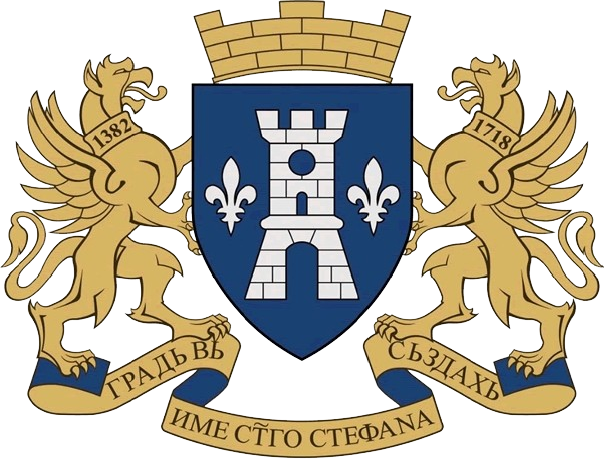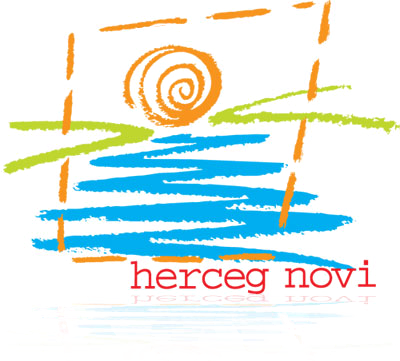Situated on the crossroad between East and West, exposed to many conquests and cultural influences, Herceg Novi took something from everybody, added its own stamp and did everything possible to differ from all other coastal towns in Montenegro. It was always a town with good communications, place where different civilisation met. Sitting well in its natural environment is the main reason for his development.
The salt town
The Bosnian king Tvrtko I, in 1382 established a new town in the bay of Topla, as a competitor to Dubrovnik in the trade of salt. Salt was a very important comodity to coastal towns in those days. He called the town he created Sveti Stefan, but as the youngest town it was also called Novi, Castrum Novum, Castel Nuovo. His intentions were to establish it as an important trading port.
The Turks occupied the town for 2 centuries, until 1687. Acording to the trevel writer Evlija Čelebija who visited Herceg Novi after 1664, the town had become a resting place, sanctuary and a safe haven for pirates, as well as a transit place for tradesmen trading with slaves. The Turkish rule was temporary severed during 1538-1539, when the Spanish took over and extended the fortress above the town. After the Turks, the Venetians captured the town and ruled until the collapse of the Venetian Republic in 1797. It followed a period of many changes of rulers: the Austrians until 1806, Russians until 1807 and the French until 1814. From1813-1814 there was a temporary parliament of Montenegro and Boka Kotorska, followed by 4 years of Austro-Hungaria from 1814-1819.
Boka Kotorska joined the newly created kingdom of Serbs, Croats and Slovenians in 1923, which became known as Yugoslavia later on. When Yugoslavia capitulated in 1941, Herceg Novi was occupied by the Italians and the Germans until the town was liberated on 28 October 1944.
This is a short resume of the stormy history of the town, which undoubtedly was a place where strategic interest met, whilst at the same time it managed to hold its own.
The Clock Tower...Tora
In the place where now is the western entrance door to the town, a tower was built in 1850 with a clock in pseudo roman style. In Turkish times there was also a clock tower called Sahat Tower, from which the one today got the name. During the Venetian time, it was called Tora, a name which many people still use today. Also from this era is the heraldic sign of Herceg Novi.
In Turkish times the entrance door had wooden mobile bridge above the canal where the stream run into the sea. This is evidenced by old drawings and engravings. That canal was buried in 19 century and in its place Nikola Djurkovic square was built. In those days, this was the main door to Old Town, just as same as it was in the days of the Turkish rule. It remains to be today too. This is usually the starting point of organised sightseeing tours. Tourists have the opportunity to enter organized this tower, and from the top discover a remarkable view of the oldest city core.
The stairs which pass under the Clock Tower lead to the uper town square-Square of Herceg Stjepan, known as Belavista by the locals. St. Arnangel Mihailo church dominates the square, where various cultural activities take place during summer, one of them being the International Book exhibition. St. Arhangel Mihailo church dominates the upper side of the town square called Belavista. It was built in the shape of Greek cross with identical arms, made from finely carved stone from Korcula. It also has some Bysantic, Roman-Gothic and Islamic elements in the structure, all very eclectic and creativ. Although from a newer date, the church fits perfectly in the ambient of the Old Town. An Icon in white Italian marble by Pavle Bilinic, looks very impressive hanging on the inside wall of the church.
The north stairs lead from the square to Kanli Tower.
Kanli kula (Bloody Tower)
Kanli Tower or Bloody Tower as it is also known, was built by the Turks on the ruins of another tower which the Turks captured in January 1482.
It has, more or less, kept the architectural authenticity of the era. The castle, whose dimensions are 60x70 m has angled towers, was made from roughly cut, local stone and looks very imposing. Although analysis have shown that some parts of the western wall belong to a period of early use of firearms, the final shape was given by the Turks. The Venetians have made various repairs and additions in 1687, soon after conquering Herceg Novi and beating the Turks after 2 century of rule. Kanli Tower rises above the north side of town, on 85m above sea level.
Insade the castle there is well preserved water cistern. At some stage it lost its original purpose and had become a prison cell. This chamber is of special interest; because of numerous drawings on its walls of gallias, fish, crosses and coat of arm...These are carved in the plaster and represent notes made by the prisoners of the time. Some of them are from Turkish era, as shown by the pictures of gallias used by the Turks in 16 and 17 century.
In 1960, the inside of the Kanli Tower was restored and made into 1000 seater open air theatre. Following the earthquake in 1979, the tower was reconstructed again, this time in Venetian style.
The Western Tower
From the Kanli Tower´s lower door, through a narrow passage, one can enter the Western Tower, which dominates the main square. Unfortunately, one cannot reach the actual tower due to the inaccessible walls. There are plans for reconstruction, with entree through the Donkey door. The access to the Old Town was used by loaded caravans, pulled in those days by donkeys-hence the name.
Two roads led from Belavista square to the lower square of Mica Pavlovica-popularly called the square of the music. On this square is situated the church of St. Jerome with belfry. On the eastern side the road leads to the town´s southern castle, Forte Mare.
St. Jerome church was built on the location of a mosque, which existed during Turkish occupation and, possibly St. Stjepan church before that. The church was built by the Venetian soldier Jeronim Korner, in memory of the liberation of the town from the Turks in 1687. There are number of important and valuable items stored in the vaults, like „Sacra famiglia“, an 18 century painting by the Italian artist Djovani Tijepol and St. Ane´s image on a wooden icon by Tripo Kokolja. Of a special importance is „Our Lady with the Saints“, a large icon on canvas at the alter . One can also find in the church a large painting of „Our lady with Christ“ , By Andrea Rico di Kandi from15 century and the silver cross by Bogdan Kaludjerovic, who attended the gold technique school in Kotor in 19th century.
St. Leopold Mandic´s Church was erected by the Venetians in 1688. They built a convent and alongside it a church dedicated to the Holy Virgin. Later on the church was dedicated to St. Francis, and then, as of the year 1976, it was dedicated to St. Leopold Bogdan Mandić, born in Herceg Novi, who was proclaimed a saint by Pope John Paul II in 1983. It is situated beside St. Jerome´s Church, lover down, toward the sea.
Forte Mare (Sea Tower)
Forte Mare is situated on the sea shore. This is a single example of construction continuity from Bosnian rulers of 17 century, up to Austrians interventions in the 19 and 20 century. Each building phase, upgrade, addition and extension can be seen, from the first walls by Herceg Stjepan Vukcic Kosaca, in the first half of 15 century, via the Turks and their important building styles, followed by Venetian Republic who ruber stamped the building and at the end Austro-Hungarians who introduced new technique, with new functions. Forte Mare is definitely one of the most beautiful examples of architecture in fortification and the presumption is real that here was the nucleus of the Old Town.
It is used to be called the Tower of Abas-pasha castle in turkish time, but was renamed in Venetian time to Forte Mare, name and appearance it maintains today. The castle was reconstructed following the earthquake in 1979 and today houses an open air cinema and a night club.
Karaca
It is situated in the area in front of the Eastern doors of the Old Town. The name comes from a spring that was supplying the locals with water for centuries. The legend says that during the fight over Hercge Novi, in the area above Kanli Tower to the locals as Jokmegdan, the Turks were bloodily defeated, resulting in blood running down the spring. Since than this spring of drinking water has been called Karadza, or Karaca as known by the people.


